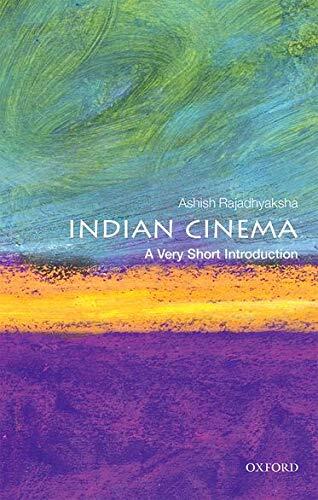
Indian Cinema: A Very Short Introduction
No ratings yet
Format
Paperback
Pages
144
Language
English
Published
Oct 1, 2016
Publisher
Oxford University Press
Edition
Illustrated
ISBN-10
0198723091
ISBN-13
9780198723097
Description
Ashish Rajadhyaksha offers an insightful exploration into the vibrant world of Indian cinema, shedding light on its rich history and cultural significance. The narrative begins with the inception of film in India, illustrating how it has captivated audiences for over a century. With every fifth film produced globally hailing from this diverse nation, the scope of Indian cinema cannot be overlooked.
Rajadhyaksha artfully captures the evolution of storytelling, from the silent era to the modern age, emphasizing key movements that have shaped the industry. He delves into the unique interplay of tradition and innovation, highlighting how regional styles and languages contribute to a multifaceted cinematic landscape. Through vivid examples, the work demonstrates the profound impact of Indian films, not just within its borders but around the world.
The author also reflects on the challenges and transformations faced by the industry in contemporary times, addressing issues such as globalization and technological advancements. This nuanced examination reveals how Indian cinema continues to adapt while staying true to its cultural roots.
Overall, this exploration invites readers to appreciate the nuances of a genre that transcends mere entertainment, weaving intricate narratives that resonate with millions. Through Rajadhyaksha's lens, one can gain a deeper understanding of India's vibrant film heritage and its enduring influence on global cinema.
Rajadhyaksha artfully captures the evolution of storytelling, from the silent era to the modern age, emphasizing key movements that have shaped the industry. He delves into the unique interplay of tradition and innovation, highlighting how regional styles and languages contribute to a multifaceted cinematic landscape. Through vivid examples, the work demonstrates the profound impact of Indian films, not just within its borders but around the world.
The author also reflects on the challenges and transformations faced by the industry in contemporary times, addressing issues such as globalization and technological advancements. This nuanced examination reveals how Indian cinema continues to adapt while staying true to its cultural roots.
Overall, this exploration invites readers to appreciate the nuances of a genre that transcends mere entertainment, weaving intricate narratives that resonate with millions. Through Rajadhyaksha's lens, one can gain a deeper understanding of India's vibrant film heritage and its enduring influence on global cinema.
Reviews
Reading Log
No reading logs found
Start tracking your reading progress to see logs here
Add Your First Reading LogNotes
Transaction Log
No transaction logs found
Start tracking your book transactions to see logs here
Add Your First Transaction Log